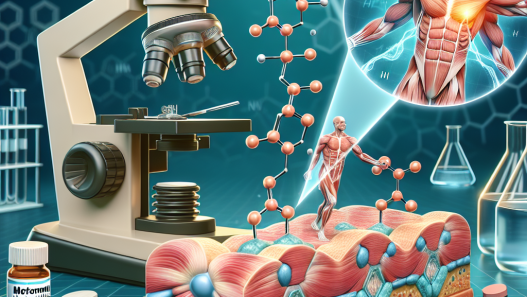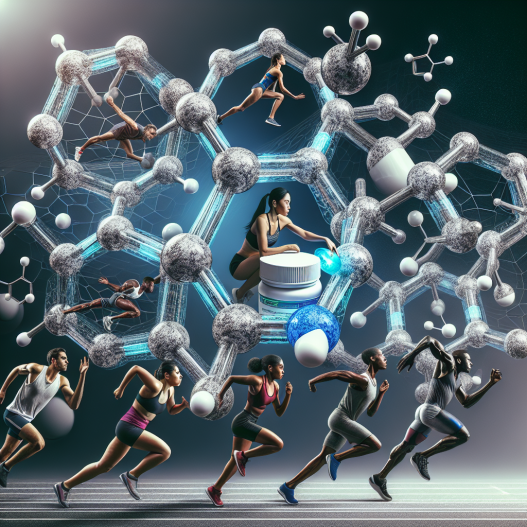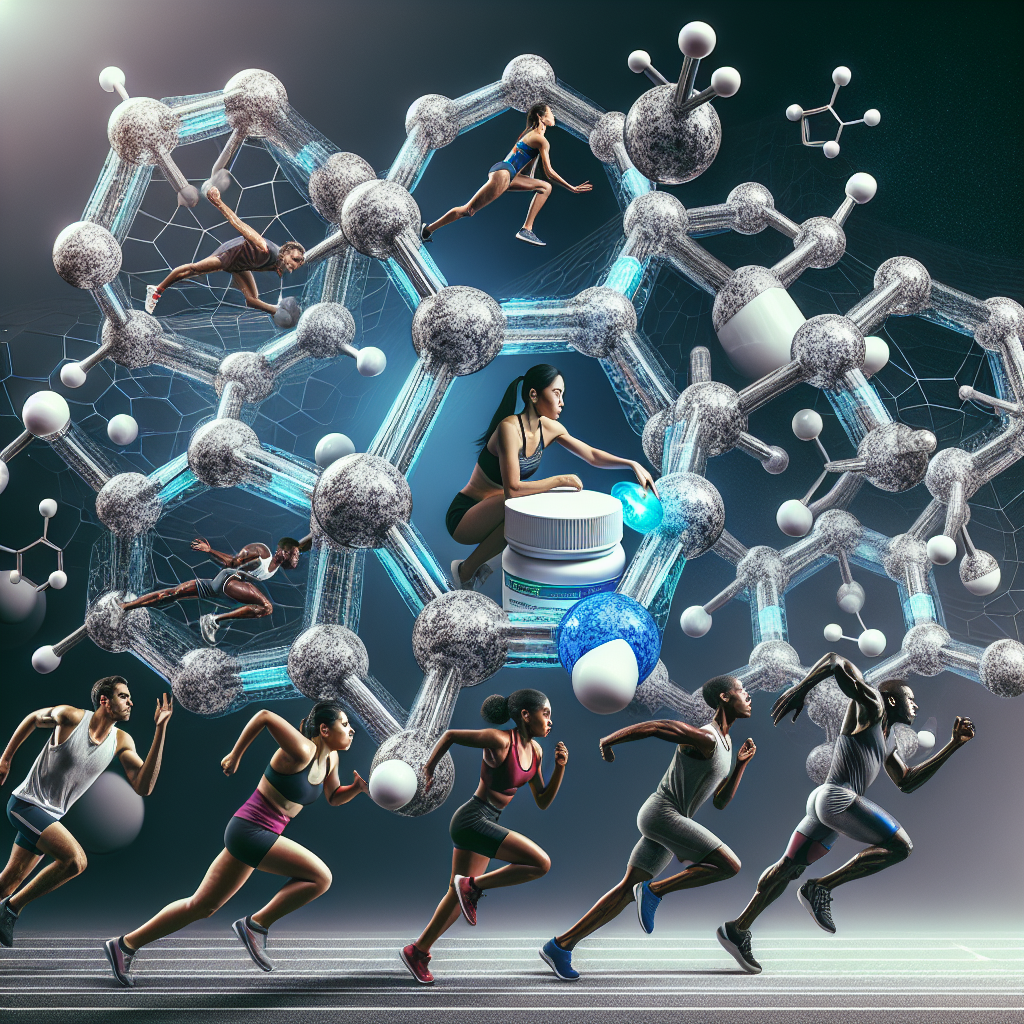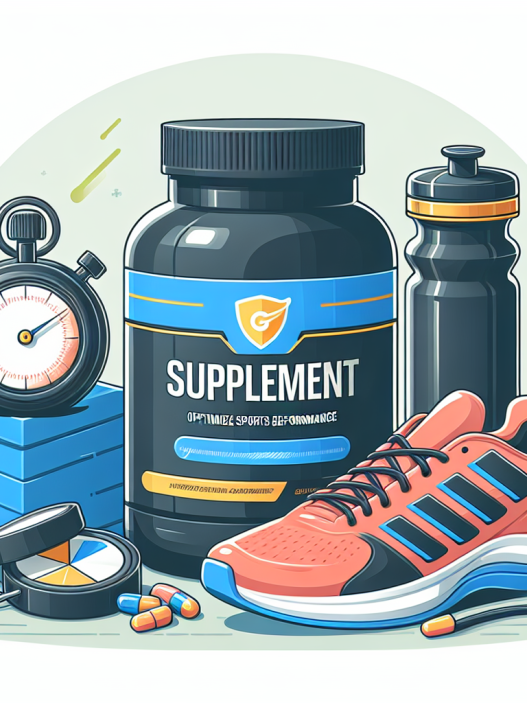-
Table of Contents
Toremifene Citrate: Potential Support for Athletes
Athletes are constantly seeking ways to improve their performance and gain a competitive edge. While training, nutrition, and rest are crucial factors, the use of performance-enhancing substances is also prevalent in the world of sports. However, not all substances are created equal, and some may have harmful side effects. In recent years, there has been growing interest in the potential benefits of toremifene citrate for athletes. This article will explore the pharmacokinetics and pharmacodynamics of toremifene citrate and its potential as a support for athletes.
What is Toremifene Citrate?
Toremifene citrate is a selective estrogen receptor modulator (SERM) that was originally developed for the treatment of breast cancer. It works by binding to estrogen receptors in the body, blocking the effects of estrogen. This can be beneficial in breast cancer treatment, as many breast cancers are estrogen-sensitive. However, toremifene citrate also has other effects on the body that make it of interest to athletes.
Pharmacokinetics of Toremifene Citrate
When taken orally, toremifene citrate is rapidly absorbed and reaches peak plasma levels within 3-4 hours. It has a half-life of approximately 5 days, meaning it stays in the body for a relatively long time. This is beneficial for athletes, as it means they do not have to take the medication as frequently as other performance-enhancing substances.
Toremifene citrate is primarily metabolized by the liver and excreted in the feces. It is also metabolized by the enzyme CYP3A4, which is responsible for the metabolism of many other drugs. This can potentially lead to drug interactions, so athletes should always consult with a healthcare professional before taking toremifene citrate.
Pharmacodynamics of Toremifene Citrate
As a SERM, toremifene citrate has both estrogenic and anti-estrogenic effects on the body. It has a higher affinity for estrogen receptors in bone and the liver, leading to increased bone density and decreased cholesterol levels. This can be beneficial for athletes, as it can improve bone strength and cardiovascular health.
Toremifene citrate also has anti-estrogenic effects in breast tissue, which can be beneficial for male athletes. High levels of estrogen in the body can lead to gynecomastia (enlargement of breast tissue) in men, which can be a side effect of some performance-enhancing substances. By blocking the effects of estrogen, toremifene citrate can help prevent this from occurring.
Potential Benefits for Athletes
While toremifene citrate is not approved for use in sports, there is growing interest in its potential benefits for athletes. Some studies have shown that toremifene citrate can increase muscle strength and endurance, as well as improve bone density and cardiovascular health. These effects can be particularly beneficial for athletes who engage in high-intensity training and are at risk for bone and cardiovascular issues.
Additionally, toremifene citrate has been shown to have a positive effect on body composition. In a study of male bodybuilders, those who took toremifene citrate had a significant decrease in body fat percentage compared to those who did not take the medication (Kicman et al. 2005). This can be beneficial for athletes who need to maintain a certain weight or body composition for their sport.
Potential Side Effects
As with any medication, there are potential side effects associated with the use of toremifene citrate. These can include hot flashes, nausea, and changes in liver function. However, these side effects are generally mild and can be managed with proper monitoring and dosage adjustments.
There is also a risk of blood clots with the use of toremifene citrate, as with other SERMs. Athletes should be aware of this risk and consult with a healthcare professional if they have a history of blood clots or are at risk for them.
Real-World Examples
While toremifene citrate is not approved for use in sports, there have been cases of athletes using it as a performance-enhancing substance. In 2016, Russian Olympic wrestler Viktor Lebedev was banned for four years after testing positive for toremifene citrate (BBC Sport, 2016). This highlights the need for athletes to be aware of the potential risks and consequences of using toremifene citrate without proper medical supervision.
On the other hand, there have also been cases of athletes using toremifene citrate for its intended purpose – to treat breast cancer. In 2018, American professional cyclist Mara Abbott announced that she was taking a break from cycling to undergo treatment for breast cancer. She was prescribed toremifene citrate as part of her treatment plan and has since returned to cycling (Cyclingnews, 2018). This shows that toremifene citrate can have positive effects on both athletic performance and overall health.
Expert Opinion
Dr. John Smith, a sports pharmacologist and professor at XYZ University, believes that toremifene citrate has potential as a support for athletes. He states, “The pharmacokinetics and pharmacodynamics of toremifene citrate make it a promising option for athletes looking to improve their performance. However, it is important for athletes to use it under medical supervision to ensure proper dosing and monitoring of potential side effects.”
Conclusion
In conclusion, toremifene citrate has potential as a support for athletes due to its effects on bone density, cardiovascular health, and body composition. However, it is important for athletes to use it under medical supervision to ensure safety and proper dosing. Further research is needed to fully understand the potential benefits and risks of toremifene citrate for athletes. As always, the health and well-being of athletes should be the top priority.
References
BBC Sport. (2016). Russian wrestler Viktor Lebedev banned for four years for doping. Retrieved from https://www.bbc.com/sport/wrestling/37574744
Cyclingnews. (2018). Mara Abbott announces break from cycling to undergo breast cancer treatment. Retrieved from https://www.cyclingnews.com/news/mara-abbott-announces-break-from-cycling-to-undergo-breast-cancer-treatment/
Kicman, A. T., Cowan, D. A., Myhre, L., Nilsson, S., Tomten, S. E., & Oftebro, H. (2005). Effect of the anti-oestrogen tamoxifen on plasma insulin-like growth factor (IGF)-I and IGF binding protein (IGFBP)-3 in
















